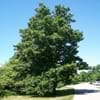Life Span
Perennial
Perennial
Type
Tree
Flowering Plants, Fruits, Trees
Origin
Northeastern United States, Mid-Atlantic United States, Southeastern United States, Central United States, Canada
Anatolia, Asia, Europe, Iran, Maghreb, Morocco, Norway, The Hiamalayas
Types
Northern shagbark hickory, Southern shagbark hickory
Flowering Cherries, Sour Cherries, Sand Cherries, Sweet Cherries, Capulin Cherries
Habitat
Woodland Garden Canopy
Forest edges, Wild, Woods
USDA Hardiness Zone
4-8
4-8
Sunset Zone
Not Available
4, 5, 6, 7, 15, 16, 17
Habit
Oval or Rounded
Upright/Erect
Flower Color
Not Available
White
Flower Color Modifier
Bicolor
Not Available
Fruit Color
Not Available
Red
Leaf Color in Spring
Not Available
Dark Green
Leaf Color in Summer
Not Available
Orange
Leaf Color in Fall
Not Available
Orange
Leaf Color in Winter
Not Available
Orange
Leaf Shape
Pinnate
Oblong
Plant Season
Spring, Summer, Fall
Spring, Summer
Sunlight
Full Sun
Full Sun, Partial shade
Type of Soil
Loam, Sand
Loamy, Well drained
The pH of Soil
Acidic, Neutral
Slightly Acidic
Soil Drainage
Well drained
Average
Bloom Time
Not Available
Early Spring, Spring
Tolerances
Not Available
Heat And Humidity, Not Available
Where to Plant?
Ground
Ground
How to Plant?
Seedlings
Grafting, Seedlings, Transplanting
Plant Maintenance
Medium
Medium
Watering Requirements
Average Water Needs
Never Over-water, Over-watering can cause leaf problems or root diseases, Prefer drip-irrigation instead of Over-head watering, Water twice a day in the initial period
In Summer
Lots of watering
Lots of watering
In Spring
Moderate
Moderate
In Winter
Average Water
Average Water
Soil pH
Acidic, Neutral
Slightly Acidic
Soil Type
Loam, Sand
Loamy, Well drained
Soil Drainage Capacity
Well drained
Average
Sun Exposure
Full Sun
Full Sun, Partial shade
Pruning
Remove damaged leaves, Remove dead branches, Remove dead leaves
Don't prune in the fall, Prune if you want to improve plant shape, Prune in late winter, Remove dead or diseased plant parts, Remove deadheads
Fertilizers
Apply 10-10-10 amount
All-Purpose Liquid Fertilizer
Pests and Diseases
Leaf spot, Powdery mildew, Trunk Rot, Verticillium Wilt
Aphids, Bacterial Canker, Black Knot, Brown Rot, Caterpillars
Plant Tolerance
Drought
Drought
Flowers
Insignificant
Yes
Flower Petal Number
Not Available
Not Available
Foliage Texture
Not Available
Not Available
Foliage Sheen
Not Available
Not Available
Attracts
Mice, Red and Gray Squirrels
Birds
Allergy
breathing problems, Mouth itching, Sore Throat, Swelling, Throat itching
Swelling in the face
Aesthetic Uses
Not Used For Aesthetic Purpose
Showy Purposes
Beauty Benefits
Moisturizing
Not Available
Environmental Uses
Air purification
Air purification
Medicinal Uses
Analgesic, Antirheumatic
Arthritis, Gout, Kidney problems, Rheumatoid arthritis, Swelling
Part of Plant Used
Sap, Seeds
Flowers, Fruits
Other Uses
Used as an excellent fuel, Used in pies, cakes, Used to make yellow dye, used to prepare nut milk
Wood is used for making furniture
Used As Indoor Plant
No
No
Used As Outdoor Plant
Yes
Yes
Garden Design
Edible, Shade Trees
Not Available
Botanical Name
CARYA ovata
Prunus avium
Common Name
Shagbark Hickory
Cherry Tree
In Hindi
Shagbark Hickory
चेरी का पेड़
In German
Shagbark Hickory
Kirschbaum
In French
Caryer ovale
Cerisier
In Spanish
Shagbark Hickory
Cerezo
In Greek
Shagbark Hickory
κερασιά
In Portuguese
Shagbark Hickory
árvore de cereja
In Polish
ORZESZNIK PIĘCIOLISTKOWY
wiśniowe drzewo
Phylum
Magnoliophyta
Magnoliophyta
Class
Magnoliopsida
Magnoliopsida
Order
Juglandales
Rosales
Family
Juglandaceae
Rosaceae
Clade
Angiosperms, Eudicots, Rosids
Angiosperms, Eudicots, Rosids
Tribe
Juglandeae
Not Available
Subfamily
Juglandoideae
Not Available
Number of Species
Not Available
Not Available
Difference Between Shagbark Hickory and Cherry Tree
If you are confused whether Shagbark Hickory or Cherry Tree are same, here are some features about those plants to help you choose better. Many people think that these two plants have the same characteristics, but one can see Shagbark Hickory and Cherry Tree Information and learn more about it. Fertilizers required for proper growth of Shagbark Hickory are Apply 10-10-10 amount, whereas for Cherry Tree fertilizers required are All-Purpose Liquid Fertilizer. Hence, one should know the basic difference between Shagbark Hickory and Cherry Tree if you are planning to have them in your garden to enhance its beauty.
<
Flowering PlantsImportance of Shagbark Hickory and Cherry Tree
Want to have the most appropriate plant for your garden? You might want to know the importance of Shagbark Hickory and Cherry Tree. Basically, these two plants vary in many aspects. Compare Shagbark Hickory and Cherry Tree as they differ in many characteristics such as their life, care, benefits, facts, etc. Every gardener must at least have the slightest clue about the plants he wants to plant in his garden. Compare their benefits, which differ in many ways like facts and uses. The medicinal use of Shagbark Hickory is Analgesic and Antirheumatic whereas of Cherry Tree is Arthritis, Gout, Kidney problems, Rheumatoid arthritis and Swelling. Shagbark Hickory has beauty benefits as follows: Moisturizing while Cherry Tree has beauty benefits as follows: Moisturizing.
Compare Facts of Shagbark Hickory vs Cherry Tree
How to choose the best garden plant for your garden depending upon its facts? Here garden plant comparison will help you to solve this query. Compare the facts of Shagbark Hickory vs Cherry Tree and know which one to choose. As garden plants have benefits and other uses, allergy is also a major drawback of plants for some people. Allergic reactions of Shagbark Hickory are breathing problems, Mouth itching, Sore Throat, Swelling and Throat itching whereas of Cherry Tree have Swelling in the face respectively. Having a fruit bearing plant in your garden can be a plus point of your garden. Shagbark Hickory has no showy fruits and Cherry Tree has showy fruits. Also Shagbark Hickory is not flowering and Cherry Tree is flowering. You can compare Shagbark Hickory and Cherry Tree facts and facts of other plants too.





